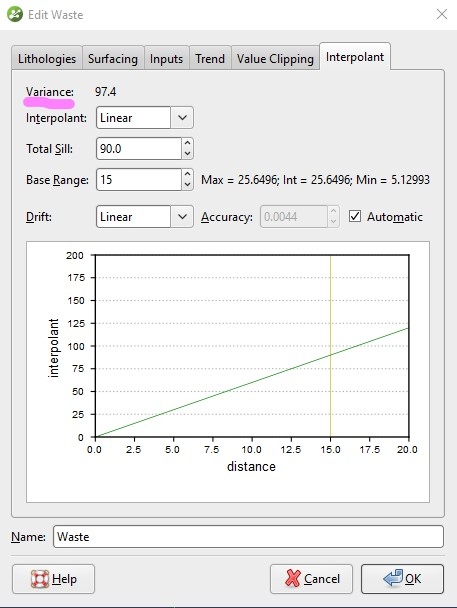Intrusion Variogram - Derive Variance
MichaelDeVasto
Posts: 4
in Leapfrog
When modeling intrusions and employing the variography, there is a "variance" reported at the top - how is this variance calculated? The data to model my intrusion is categorical so where numbers are coming is a mystery.
My only guess it is something to do with the interval lengths?

My only guess it is something to do with the interval lengths?

0
Comments
-
Hi Michael,
For the intrusion tool Leapfrog generates numeric, volume points along the drillhole trace; zero values at the contact, positive values internally, and negative values externally. The variance number you see there is the variance of the clipped volume / value points. In this particular intrusive / categoric context there probably isn't that much value in the number since it is a global statistic from system generated values.
Regards,
David Watkins0 -
Hello David, could you kindly provide more details on the best Variance number to get? Play with Lower and Upper bond is somethimes very sensiteve. So I should play until get a lower value of Variance? many thanks0
-
Hi Frederic,
There is no 'best variance' number since this number comes from the data itself (which in this case, represents distance values from the nearest contact, with or without clipping applied). It is a statistical measurement for how variable the data is. For intrusions, the actual variance does not provide any value; it could be hidden from this menu (although some choose to set the Sill value to the Variance, this will not change the result).
The reason these settings are exposed are to allow the user to create the shape that best suits their interpretation of the geology/geometry/mineralisation/alteration/etc. I'd recommend this video to better understand - https://www.seequent.com/technical-tuesdays-advanced-surface-editing-in-leapfrog-geo/ (start at 9:40 for Volume Points/how intrusions are generated)
Anna
0